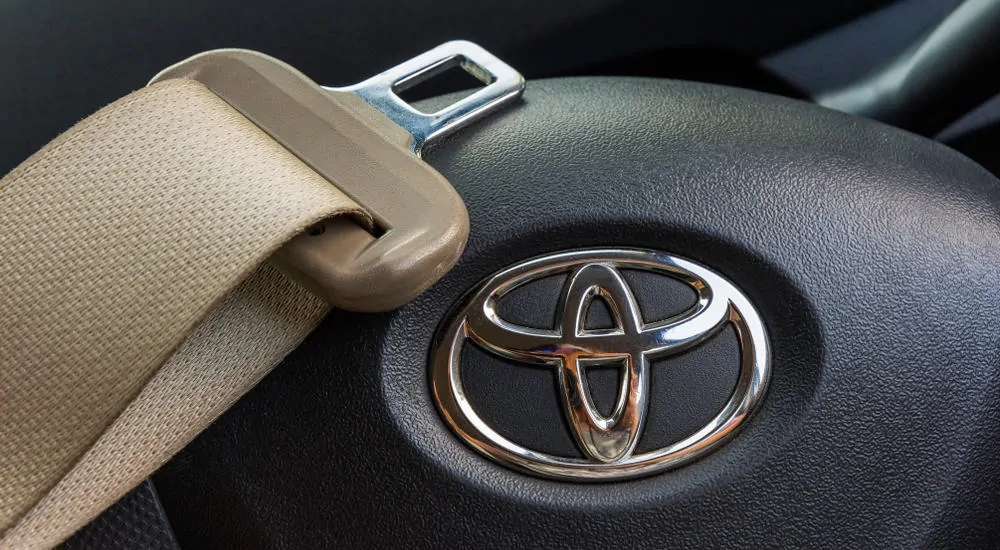Growing up, I remember seeing Men Are from Mars, Women Are from Venus on a bookshelf at home. At the time, I was too young to understand the topic and somewhat confused by the insinuation that my dad was from an entirely different planet than my mom and me. If that was the case, why wasn’t he more helpful with my solar system project? Why hadn’t my mom told me anything about Venus?
Waxing nostalgic hits different now that I’m a parent, watching with curiosity and wonder as my toddler discovers the world and encourages me to do the same. And yet, there are still some realms of the world where it feels like men and women are from different planets, particularly behind the wheel. No, I’m not talking in terms of extraterrestrial beings, but the vast oversight in the automotive industry that’s failed to recognize the physicalities that differentiate men from women. It’s an oversight that happens anytime I get in the driver’s seat, and it does for you, too.
Driver Differences: Who Moved My Seat?
I enjoy driving my husband’s F-150 because of its higher driving position and all the bells and whistles that Ford offers. However, despite being almost the same height, getting behind the wheel of his truck always requires a few adjustments to the seat. I have to move it forward to reach the pedals, which leaves him hugging the steering wheel and dashboard if I forget to return the seat to the original position. Disclaimer: I often forget that minor detail, adding a plot twist when he climbs in the driver’s seat for his early morning commute.
I’m not alone in these adjustments; social media reels paint the same picture, and polls and scientific studies confirm the reality. Most women prefer a different driving position that offers greater visibility and accessibility. We opt to sit closer to the steering wheel to reach the pedals better and with a more elevated seat that ensures we can easily see over the dash. This positioning accommodates our different body composition and build but does little to enhance our safety behind the wheel. By sitting closer to the steering wheel, we’re at greater risk of injury in frontal collisions.
But aren’t seatbelts, specifically the standard three-point design, supposed to mitigate our risk of injury in a collision? They do to a certain degree, as in that they’re better than nothing at all. However, there’s been a significant oversight in seatbelt design and crash testing over the last six decades. The industry has failed to account for the physical differences between men and women. Instead, seatbelts and most standard safety features are designed as a one-size-fits-all solution that’s proven far from adequate.
The Proof Is in the Numbers
The automotive industry is constantly evolving, so it’s hard to imagine this oversight is a reality. After all, we’re looking at models that can practically drive themselves with cutting-edge, hands-free cruise control features. So, how could something as crucial as seatbelt design and crash testing go unnoticed? It’s even harder to believe when you look at the statistics.
The National Highway Traffic Safety Administration reports a car crash occurs every six minutes in the United States, with the latest poll from 2020 reporting over 14,300 accidents daily. Men are more likely to be involved in accidents because, historically speaking, women are more cautious drivers. However, women are at a greater risk behind the wheel, 73% more likely to be seriously injured and 17% more likely to die in a collision. If the industry has this data, why haven’t they done something to improve those numbers?
Seatbelts and Crash Test Dummies
In terms of physical build, men might as well be from Mars and women from Venus because of our unique body compositions. From different chest sizes, hip widths, and muscle strengths to how our bodies respond under pressure, the differences between men and women are heightened behind the wheel. Unfortunately, seatbelts don’t account for these differences, with women fighting the three-point design to find the ideal balance between comfort and safety.
Crash test dummies are primarily to blame for this oversight because the industry has relied on a male test dummy known as Hybrid III for the last six decades. When crash tests first became a thing, males volunteered to get behind the wheel because, in the 1960s and 1970s, it was believed men faced higher fatality rates. This unfounded belief led to the development of the Hybrid III crash dummy in 1976.
Standing 5’9” tall and weighing 171 lbs, Hybrid III is still used today in mandatory safety testing that evaluates frontal, side barrier, side pole, and rollover collisions. He’s the inspiration behind seatbelt design and plays an integral role in how the cars, trucks, and SUVs on the road today are ranked in terms of safety. Yet, while these ratings are helpful and this testing is crucial, Hybrid III doesn’t account for female body composition. He doesn’t have breasts, his hips are narrow, and he’s taller and heavier than the average female. He’s also positioned further away from the steering wheel in the tests.
Finding the Solution: Female Crash Test Dummies
The solution seems pretty apparent–design a female crash test dummy that accounts for these differences. That solution seemingly came in the new millennium when the first female crash test dummies were developed by organizations like the Insurance Institute for Highway Safety, which began using female crash test dummies in 2003. Unfortunately, these female dummies still miss the mark and don’t accurately depict women today. How so?
These female crash test dummies are anywhere from 5’ to 5’3” tall and weigh 97 to 137 lbs. While the measurements might reflect the average woman in the 1970s, they don’t depict women today. Moreover, they’re simply scaled-down versions of the male dummies, meaning they don’t have larger chests, smaller frames, or broader pelvises. Instead, they double as child crash test dummies for tweens. The last time I checked, I couldn’t see any resemblance between myself and a 12-year-old girl.
Looking Ahead
Fortunately, I’m not alone, and neither are you. There’s an ongoing push in America to correct this oversight and heighten our safety behind the wheel. It’s long overdue, with Congress introducing new bills that challenge the industry to address the inequities and find workable solutions that suit men and women, not one or the other.
The industry has long argued that developing crash test dummies is expensive and time-consuming, with the dummies taking up to 30 years of research to build and fine tune. No one discounts the work and money that go into these dummies. However, 60 years is a long time to ignore the safety of female drivers, especially since females have always had the opportunity to get behind the wheel.
The real concern comes down to the value of our lives. We’re worth the expense of building female crash test dummies that accurately represent us, from our physical builds to our preferred driving position, and that aren’t smaller versions of male dummies or body doubles for a child or teen. Moreover, testing with female crash dummies should be mandatory for every crash test rating because, unlike modern standards that make this testing optional, we can’t opt out of getting behind the wheel to navigate our commute, drop the kids off at school, run errands around town, or venture out of town with friends. Why are we allowing the experts to opt out for us?
Our lives mean something, and it’s time the industry recognizes as much. Thankfully, the more we shed light on the subject, the more traction the issue gains as the industry is forced to take action. As a female, wife, mother, daughter, and driver, that action is long overdue.






